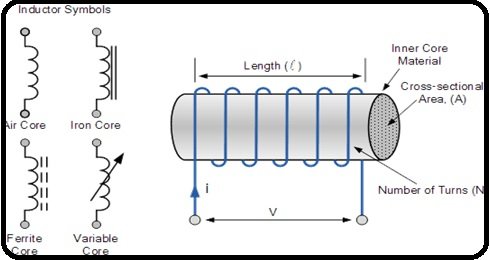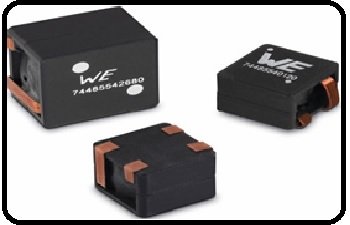In this tutorial, we will discuss inductors and their types, along with their workings and applications. An inductor is a device that stores energy in the form of a magnetic field. We call this property of storing energy “electromagnetism”. It is a passive electrical component that usually consists of wires that wrap around a ferromagnetic material in the form of a coil. When current passes through this coil, it produces a magnetic field, and the strength of this field depends on the number of turns of the coil. This means that if the number of turns is low, then the strength of the magnetic field would be low; similarly, if the number of turns is high, then the strength of the magnetic field would be high. Because it stores energy in the form of a magnetic field, it does not change the current suddenly.
Introduction to Inductors
The first inductor was discovered by Michael Faraday in 1830 in a simple but strange way. He just wrapped a wire around a cylindrical piece of paper, then attached both ends of this wire with a galvanometer, which is a current measuring device. He then moved the magnet inside and outside of this cylindrical piece of paper, and current was produced in the galvanometer by the movement of the needle of the galvanometer. After that, Nicholas Calland discovered the inductor coil. Which we currently use in the form of an inductor. Figure 1 shows the inductor symbols with the core, length of wire, and number of turns of coil.
Types of Inductor
Different types of coils are currently in use, and here we provide a list on the basis of their core.
Toroidal Core Inductor
This type has a surface in the shape of a ring or donut and wire wounds around this surface. This is made up of different types of materials, such as tape, powered iron, ferrite, etc. This gives high coupling results, but it saturates early at high frequencies, so we only use it for low-frequency applications. It is mainly useful in medical devices, telecommunication devices, switching regulators, air conditioners, refrigerators, and digital and analog power supplies. A simple toroidal is shown in figure below.
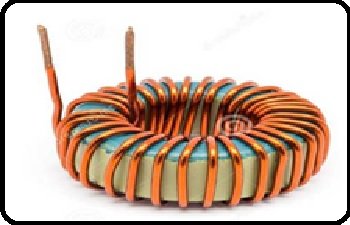
Air Core Inductor
This type is mainly made up of ceramic material; therefore, ceramic inductors are commonly known as air core inductors. It has a very low thermal co-efficient of expansion, but it has no magnetic properties; therefore, when we use it as a core, it does not increase the magnetic permeability. Its primary function as an inductor is to provide the proper coil shape. The main advantage of this core is that it has a high quality factor and low core loss. Its uses include high-frequency applications where we require low inductance. For a simple air core coil, refer to the figure below.
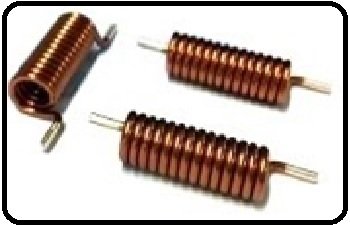
Iron Core Inductor
This type’s core uses iron material and is best for places where we need low-space inductors. These are useful in high-power, high-inductance, but low-frequency applications, such as in audio equipment. Its applications are limited as compared to other types of inductors. For a simple iron-core coil, refer to the figure below.

Ferrite Core Inductor
This is the type whose core has a ferromagnetic material, which we can refer to as a ferrite core. Ferromagnetic material is a compound of metal oxide with iron, and other elements mix together to form a crystalline structure. There are two types of ferrite cores that are currently in use: soft ferrite cores and hard ferrite cores. A soft ferrite core has the ability to change the polarity of its magnetism without using any energy.
Similarly, a hard ferrite core is just like a permanent magnet, which we also refer to as a permanent magnet. Its polarity is always the same, even when it moves from one direction to another. This type of ferrite core also helps the inductor increase its performance by increasing the permeability of the coil, which leads the inductor to increase its inductance. The increasing permeability range is between 20 and 15000, but it also depends on the ferrite material. If we do a comparison of the inductance with the air, then it is so much higher. For a simple ferrite core type, refer to the figure below.
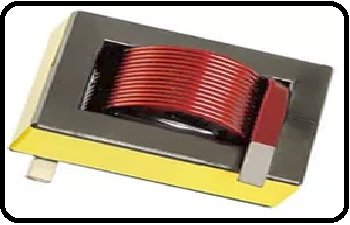
Powered Iron Core Inductor
This type of inductor core has 100% pure iron material, but its outer surface coating has insulating powder material. Therefore, we call it a powdered iron inductor. Because this core is made up of 100% iron, it has a solid structure. To make this inductor, the iron is compressed at high pressure, then a binder such as epoxy or phenolic is mixed with it to form powdered iron. When both materials mix together, it produces a distribution in the air gap, and this air gap stores high magnetic flux. This air gap also prevents the core from saturating, and high DC current can pass without core saturation. It has a high temperature coefficient; therefore, it is mainly used in switching power supplies. A simple powdered iron is shown in the figure below.
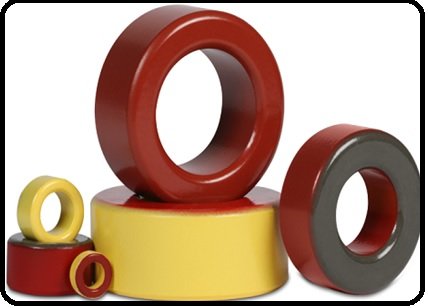
Laminated Core Inductor
This type of inductor core is made up of laminated sheets, and these sheets are made up of steel material. The arrangement of these sheets is from top to bottom with each other to make a proper lamination of the core. Because these sheets have different lengths and thicknesses, they connect or join together through an insulating material, which makes the core flexible. In this inductor core, each sheet separates from other sheets through insulating material; therefore, this structure saves the core from eddy current losses. These types of cores are useful for high-power applications. Therefore, they have a low frequency and are mostly useful for filtering devices where excitation frequencies are normally high in KHz. For a simple laminated core inductor, refer to the figure below.

Variable Inductor
It is the type of inductor in which the magnetic core moves around the inductor’s winding, and by adjusting the magnetic core, the user can easily adjust the inductor value. These types of inductors are mainly useful for high-frequency applications where tuning requirements are present, such as radio, etc. These are easily available in the market in ranges from 10 uH to 100 uH and 10 nH to 10 mH. A simple variable inductor is shown in figure below.
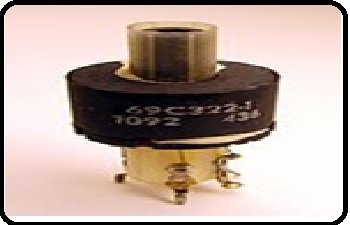
Coupled Inductor
It is the type in which two inductors connect together by electromagnetic induction. As we know, mutual induction is a phenomenon in which when voltage flows in one inductor, it generates voltage in another, which couples with this through mutual induction. Similarly, the coupled inductor works on this phenomenon. These inductors are useful for isolation purposes where we need to isolate two electrical circuits from each other. For a simple coupled type, refer to the figure below.
Conclusion
In conclusion, this tutorial provides an in-depth overview of inductors and their types. In this tutorial, we discuss eight different types of inductors to better grasp and understand the concept. Hopefully, this was helpful in expanding your knowledge of inductors.
You may also like to read:
- FSR 400 Force Sensing Resistor introduction
- Photoresistor Interfacing with Arduino for Light Measurement
- Three Phase Induction Motor Protection System Using PIC Microcontroller
- ESP32 Touch Wake Up from Deep Sleep
- LT3750 Capacitor Charge Controller IC
- ESP32 with MPU9250 9-axis Gyro Accelerator Magnetometer Module
- ESP32 with MPU6050 Accelerometer, Gyroscope, and Temperature Sensor ( Arduino IDE)
- ESP32 ESP-NOW Getting Started Tutorial with Arduino IDE
This concludes today’s article. If you face any issues or difficulties, let us know in the comment section below.
